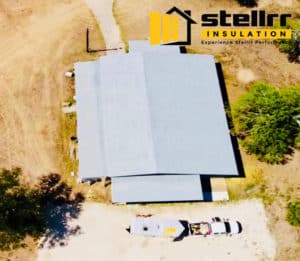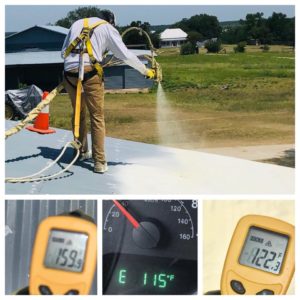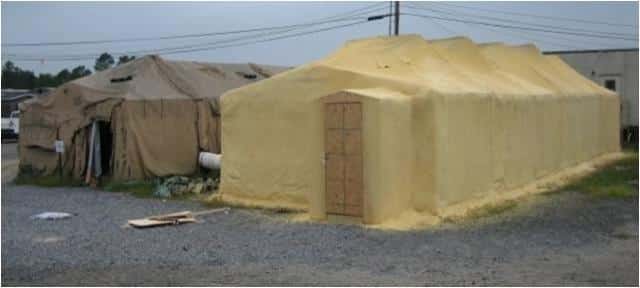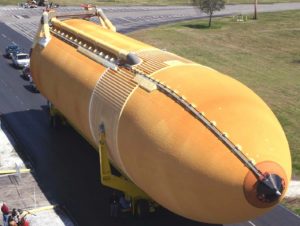
WARNING: Don’t Hire Commercial Roofing Contractors in Austin TX BEFORE Reading This!
Most Austin commercial roofing companies are not set up with the very expensive equipment required to install the best performing roof systems. And their roof repair or installations are subbed out to contract-labor crews instead of being done by highly trained in-house applicators.
Also, before hiring a commercial roofing contractor around Austin TX, you need to be informed on which roofing system is best for your flat or low slope roof.
Best Austin Commercial Roof Coating Systems
- Which of the top 6 Austin low slope or flat roof repair problems is your commercial roof experiencing?
- Are you in charge of ensuring the valuables under your roof are kept safe in the most extreme conditions?
- Do you currently have one of the following roofing systems: built-up, hot black asphalt, modified bitumen, metal, concrete, EPDM, TPO, rusted metal, butyl, polyurethane, acrylic coatings, or silicone coatings?
If you answered yes to the questions above, this may be the most important article you read in trying to have your central Texas commercial roof repaired.
1. Do your contractor require you tear-off and replace the existing commercial roof membrane?
Most flat or low slope roof repair solutions will REQUIRE a complete tear-off and replacement of your existing roof membrane.
According to the NCRA, 68.5 percent of low-slope roofs are completely demolished. But, that is frequently because of the new roof systems limited capabilities. With the best low slope coating systems, you rarely need to tear off and replace the roof membrane. Avoiding a tear-off saves you 20-50% on the roof price, and complies with the City of Austin’s Zero Waste laws. It’s called SPF roofing.
The Green Sustainable Roofing Alternative

It is a green sustainable roofing system that has been around since the 1960s and has a long life. The system has low maintenance, saves energy and adds durability to the building while helping control moisture, and having very little to waste.
The SPF roofs of today do NOT contain any ozone-ozone-depleting chemicals. It helps stop global warming because of the many energy-saving characteristics. For example, the entire roofing system arrives in 55-gallon drums, and the foam plastics expand 30-times their original volume when being installed. Other roofing systems require semi-trucks for removal and delivery of new materials. SPF saves significantly on the cost of transportation fuel.
2. How do you fix ponding on a depressed low slope roof?
The traditional answer is to remove and replace the roof with a new loped membrane construction. But Spray Polyurethane Foam can successfully add the proper slope to turn concave areas into convex areas.
In fact, this issue is one that my dad, Wayne Mansur, had back in the late 1980s in a building he managed. This was my first, and his first, introduction to spray foam. At the time Wayne was the President of El Paso Electric Company Credit Union. The financial institution operated in four military barracks from Ft. Bliss that were pushed together. Every time it rained, he would have water ponding for over a week.
Some Texas roof contractors wanted to install tapered rigid board insulation in layers that day varying lengths of fasteners. This sounded weak and he decided to try SPF instead. In the first few months, he noticed the utility bills dropping significantly, and could not figure out why. Then he discovered that an added benefit of SPF roofing was added insulation R-value, and elimination of air leaks which resulted in lower electric bills. The roof is still in use today, 30 years later, and still does not leak.
3. Does your Austin area commercial roof seem to constantly need service issues resolved?
Here is how Texas A&M fixed their frustration with maintenance issues and leaks on over 7-million sq ft of traditional BUR commercial roof in the 1970s. The university chose to hire a spray foam roofing contractor to install SPF roofing after thorough research. Then over a 4 year period in the A&M monitored the energy savings that resulted from the SPF roofing. The roof paid for itself through energy savings in a period of about 4.5 years. Now the foam roofing is nearly 40 years old. A&M is still receiving the energy savings and enjoying leak free buildings. Read the report at tamu.edu here.
4. Do you receive lots of complaints about leaks in your commercial roofing?
The complaints can stop. A study by the University of Arizona found good news from 98% of study participants. The Performance Based Research Group at the University started studying High-Performance roof systems in 1984.
To qualify for this particular study, the roofing system must meet four qualifications:
- Meet or exceed a 20-year life expectancy,
- Be a low slope roof,
- Have a 98% client satisfaction rating,
- And 98% of the roofs don’t leak when randomly sampled yearly.
Each year Dr. Dean Kashiwagi and his students sampled 50 roofs in Houston for each roofing system. To date, the study has only found one roofing system that meets the high standards – Spray Polyurethane Foam (SPF).
5. What is the most resilient roof for facing extreme winds and forceful debris in Central Texas?
A building’s most vulnerable system exposed to extreme conditions is the roof. After the roof is damaged, the building’s interior is exposed to whatever nature can throw at it. What’s more, roof damage only costs 1/10th the cost of water damage to the structure and its contents.
Water Damage Due to Roof Failure Costs 10X More Than The Roof Damage Itself.
What about Built Up Membrane Roofing? Experts surveyed the devastation resulting from hurricane Andrew. Many of the BUR systems failed to protect the buildings from serious damage.
Why did BUR fail? It is in the design, with the exposed edges, flashing, overhangs, overlaps, and joints. Wind can easily grab the corner of the roof, lift and peel back the membrane.
How did the SPF systems hold up under the hurricane? The inspected roofs held up remained dry and intact. Why? Well with properly installed spray foam roofs, you have a monolithic system that is basically glued to the decking and building walls. Because of the adhesion of the foam itself, there are no fasteners. It is seamless, no joints or edges for the wind to pick up.
Buildings with closed cell spray foam installed are 300% stronger than without it.
SPF weights only 2-3 pounds per cubic foot which is very light, yet it is very rigid. In fact, SPF is resilient enough to even resist damage from missiles.

Did you ever wonder…
- Why does the US Military like to use SPF to coat the outside of their tents in the middle east?
- Why NASA uses SPF for protecting shuttles traveling into outer space?

Two reasons include the monolithic protection from strong wind thrown debris and added thermal barrier.
An important difference is how SPF versus BUR roofs respond continuous pelting penetrations from high-velocity debris. SPF roofs respond to penetrations with no resulting leakage because of the thickness and cell structure. Lateral movement of water within foam is non-existent because of adhesion between the foam and substrate. However, the BUR system penetrations allow lateral movement between layers as well as at the substrate. This results in immediate inside damage to valuables.
6. In hail storms wouldn’t you prefer to have a 3-inch thick roof membrane versus a 1/4 inch layer?
SPF is thick and performs above average when comparing to other roofing systems resistance to hail damage and failures. You can find studies on SPF roof performance in the Hail Damage to Roofing report (W.C. Cullen- NRCA). The National Roofing Foundation recently surveyed 140 spray foamed roofs of varying ages from 27 years old, to brand new. The foundation concluded that SPF roofs help prevent roof leaks from hail.
The report states that “They are not in immediate danger of leaking.” Also, the hail impact was limited to the “Upper Surface” of the multi-inch thick foam.
In a similar fashion, SPF roofs inspected after hurricanes showed excellent performance. One caveat, of course, is that the substrate must be adequately anchored to the rest of the building. Polyurethane roofs do not tend to progressively fail after impact from missiles, whereas BUR systems do tend to fail. (Thomas L.Smith, AIA- NRCA)
What are some of the benefits of an SPF building system?
- High R-Value levels for insulation
- Integral air barriers
- Moisture control assistance
- Stops thermal bridging through fasteners and decking gaps.
- Re-Coating polyurethane roofs are cost effective
Covering over other roof systems with SPF is a cost-effective retrofit method.
Can a contractor install a spray foam roof be installed over your existing Austin commercial roof membrane?
Here are a handful of substrates that work: BUR, modified bitumen, single ply, sheet metal, ceramic tile, gypsum, tectum, and wood.
Is a Spray Foam Roof right for your commercial building?
SPF is great especially when:
- Added insulation is helpful.
- Many penetrations exist in the roof substrate.
- There is an unusual shaped or configured roof deck.
- Materials must be lightweight.
- Positive drainage is needed, so slope must be added.
Why are not more buildings using a spray foam roofing system?
Much of this results from misconceptions about spray polyurethane roofing. Many of these misconceptions have been clarified above. If you would like to explore the option of spray foam efficiency for your building, feel free to contact Stellrr at 512-520-0044.
Stellrr installs SPF roofing systems, as well as other spray, applied coatings like acrylic elastomeric.
Summary of spray foam roofing benefits:
- Over 40 years of high-performance history
- High thermal resistance per unit of thickness
- Seamless or monolithic construction
- Conforms to every unusual substrate
- Excellent adhesion
- 2.0 lb – 3.0 lb density per cubic foot
- Ultra lightweight ( less than 1-pound per ft2 for a 3-in thick foam plus coating)
- Class A fire rating
- Self-flashing
- Closed cell structure means no lateral water migration
- Eliminates thermal bridging
- Avoid costly tear-off
- Ponding water eliminated, extending roof lifespan.
Here is what to do next:
Contact Wayne at 512-520-0044. He has been using Spray Foam for Commercial Roofing for his commercial buildings for over 30 years. He is a true believer in the system but will tell you if SPF is not the right system for your roof. He may recommend another highly effective system that we install like an elastomeric coating. Let us help you fix your roof repair issues today.
